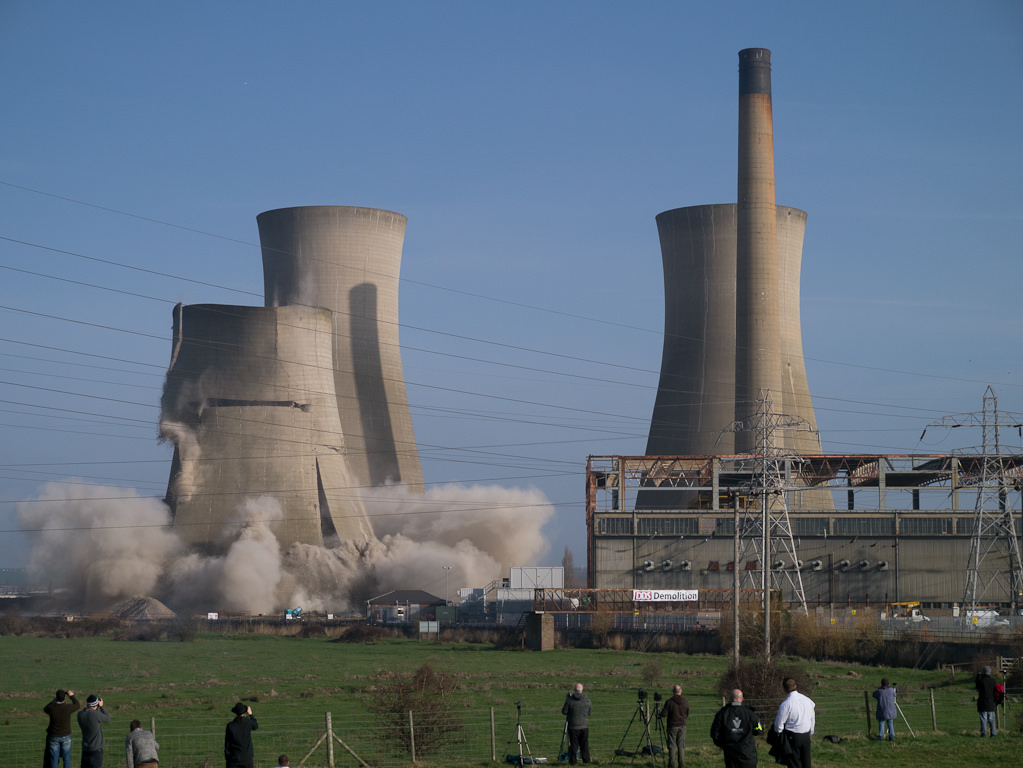In August, President Donald Trump told a rally in West Virginia: “We are back. The coal industry is back.” And to be sure, Trump keeps trying to revive the dying U.S. industry by doing things like relaxing pollution rules for coal power plants, pushing initiatives to keep failing coal plants open, and nominating a pro-coal candidate as a federal energy regulator.
Despite all that, however, the outlook for coal, especially in the U.S., is actually pretty terrible, and reminders of this just keep coming.
For starters, the amount of electricity in the U.S. produced from coal is at a 35-year low due to market forces pushing a switch to natural gas, wind, and solar. And of all the coal mined in the U.S. in the first half of this year, 10 percent of it was headed to power plants scheduled to shut down by 2032. Not exactly a sustainable business plan.
U.S. energy companies seem to agree that coal isn’t a growth opportunity. On October 4, the German environmental group Urgewald released an updated database detailing the new and expanded coal-fired power plants planned around the world. How many are in the U.S.?
Zero.
The few major U.S. coal plants that were still seriously on the table last year have all but fizzled out, primarily due to their poor financial outlooks.
Louisiana GOP Rally on December 9, 2016 at Dow Hangar, Baton Rouge, Louisiana Credit: Tammy Anthony Baker, CC BY 2.0
Not Building Coal Plants in Kansas Anymore, Toto
In August 2017, plans for building an 895 megawatt (MW) coal-fired power plant at an existing power station in southwest Kansas took a turn for the dire. In an SEC filing, Tri-State Generation and Transmission Association, which partnered on the project with Sunflower Electric Power Corporation, described the chance that they’ll actually construct the plant as “remote.” Hmm.
Instead, Tri-State claimed as a loss more than $93 million in its previous investments in the project, known as the Holcomb Expansion. The move came despite a favorable state supreme court ruling months earlier on an air permit, which required construction to start in 18 months. While Tri-State reported that “a final decision has not been made by our Board on whether to proceed,” that sure sounds like a coal plant without a future.
The rest of the proposed U.S. coal plants that in some cases technically remain on the books according to the U.S. Energy Information Administration appear dead on arrival.
A decade ago, Power4Georgians LLC launched an effort to build an 850 MW coal power station called Plant Washington in Washington County, Georgia. But progress stalled and it kept missing deadlines, allegedly because of regulatory uncertainty over greenhouse gas emissions (which doesn’t seem like much of an issue these days). In a ClimateWire story published on Scientific American August 21, 2017, Power4Georgians spokesman Dean Alford said the company remains in a waiting phase but is “encouraged” by the Trump administration’s embrace of coal.
However, according to state records, only three days later, on August 24, the company dissolved. Today, its website is full of spam. And Power4Georgians’ dream of a new coal plant is full of ash. That’s not even the worst fate for proposed coal plants in the U.S.
PacifiCorp Dave Johnston coal-fired power plant, central Wyoming, 2006. Its retirement is tentatively planned for 2027. Credit: Greg Goebel, CC BY–SA 2.0
Last year, Summit Power’s plans to build a 400 MW coal plant in Texas with carbon capture and storage technology, questionably dubbed the “Texas Clean Energy Project,” became the latest “clean coal” project to collapse (see also Southern Company’s Kemper plant). The Department of Energy pulled $450 million in funding for Summit’s project over delays, a lack of private funding, and concerns over potentially improper use of federal funds. And in October 2017, Summit filed for bankruptcy.
This past June, over in Wyoming’s Powder River Basin — a major coal mining area — the developer of the “phantom” 320 MW Two Elk coal power station was sentenced to serve 18 months in prison and pay a $14.4 million penalty. His crime was scamming the Department of Energy out of millions for a fake study of carbon capture and storage potential under the plant. All of the coal plant that ever took shape was “a road, an aluminum shed, and a concrete boiler platform.”
Yes, prospects for coal power in the U.S. are grim.
Coal: Going Down, Down, Down, Down
Still, globally, plenty of new coal power plants are still in the works, particularly in countries like China, India, Indonesia, and Pakistan. In all, 672,124 megawatts of power are planned for 1,380 new or expanded coal plants, according to Urgewald’s numbers.
“Each and every coal plant that goes online puts a new stumbling block between us and the Paris goals,” Heffa Schuecking, director of Urgewald, said in a statement.
However, the industry is shrinking, for the second year in a row. Last year, the amount of new coal power in the works topped 800,000 MW. This year, that number dropped by more than 127,000 MW, and it wasn’t because all those plants came online and are now chugging carbon dioxide and other pollutants into the atmosphere.
According to back-of-the-envelope calculations, Urgewald estimates that “more than 2/3 of the decline is because projects were shelved or canceled.” That comes out to roughly 85,000 MW of coal power that will never get built.
Coal Power vs. Paris Goals
Campaigners call for an end to coal and fossil fuels at the UN climate talks in Bonn, Germany, in 2017. Credit: Ashley Braun, DeSmog
Of course, building another 1,380 coal plants isn’t going to help the world reach the Paris Agreement goal of limiting global warming this century to just 1.5°C (2.7°F).
“Keeping to a 1.5°C pathway will be impossible unless banks and investors make a speedy and full exit from investments in the coal industry,” said Schuecking.
On Monday, the United Nations Intergovernmental Panel on Climate Change (IPCC) is expected to release a (predicted-to-be-depressing) report spelling out just how far away the world remains from meeting that goal of 1.5°C and the potential impacts of another half degree Celsius of warming.
Those same climate scientists, in a draft of the report leaked earlier this year, wrote stabilizing the climate at 1.5°C warming would require coal power to drop by two-thirds in a little over the next decade. And by 2050, they wrote, “coal would be expected to supply 1-7 percent” of energy worldwide.
Right now, the arrow at least is pointed very roughly in the right direction for that to happen. That is, down rather than up. A report released in March by environmental groups Greenpeace, the Sierra Club, and Coal Swarm uncovered big drops once again in how many coal plants are being planned, started, and finished around the world.
“From a climate and health perspective, the trend toward a declining coal power fleet is encouraging, but not happening fast enough,” said Ted Nace, director of CoalSwarm. “Fortunately, mass production is cutting solar and wind costs much faster than expected, and both financial markets and power planners worldwide are taking notice.”
Main image: Demolition of Richborough Power Station in the UK, which at different times ran on coal and oil. Credit: shirokazan, CC BY 2.0
Subscribe to our newsletter
Stay up to date with DeSmog news and alerts









